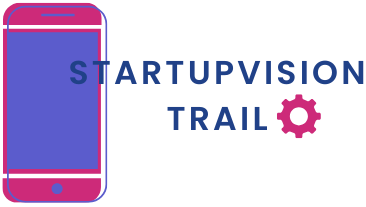Table of Contents
ToggleIn today’s fast-paced digital landscape, businesses are constantly seeking ways to streamline operations and enhance efficiency. IT automation solutions have emerged as a game-changer, simplifying complex processes and reducing the burden on IT teams. By automating repetitive tasks, organizations can not only save time but also minimize errors and improve service delivery.
As companies embrace these innovative tools, they unlock the potential for greater agility and responsiveness. From automating software deployments to managing network configurations, IT automation solutions empower organizations to focus on strategic initiatives rather than mundane tasks. This shift not only boosts productivity but also drives significant cost savings, making it an essential component for any forward-thinking enterprise.
Overview of IT Automation Solutions
IT automation solutions streamline IT operations by utilizing software tools to execute repetitive tasks without human intervention. These tools encompass a wide range of functionalities, including system monitoring, application deployment, and data management. By automating processes, IT teams reduce manual workloads and enhance operational efficiency.
Types of IT Automation Solutions
- Infrastructure Automation: Infrastructure automation focuses on managing and provisioning computer systems and networks automatically. Technologies like Infrastructure as Code (IaC) enable consistent and repeatable infrastructure management.
- Application Deployment Automation: Application deployment automation simplifies the process of releasing software updates and new applications. Continuous integration and continuous deployment (CI/CD) pipelines facilitate rapid delivery while minimizing downtime.
- Cloud Automation: Cloud automation involves managing cloud resources automatically. Solutions help optimize resource usage, scale applications, and automate backups, allowing businesses to leverage cloud technologies effectively.
- Process Automation: Process automation addresses business workflows by automating tasks across various applications. Robotic Process Automation (RPA) tools automate rule-based tasks, improving productivity and accuracy.
Benefits of IT Automation Solutions
- Increased Efficiency: IT automation solutions enhance efficiency by allowing faster execution of tasks. Automated processes reduce delays associated with manual handling.
- Error Reduction: Automated systems minimize human error by adhering to pre-defined instructions. This ensures consistency in task execution.
- Cost Savings: Automation reduces operational costs by decreasing the resources needed for manual work. Organizations can reallocate these resources to strategic tasks.
- Improved Agility: By adopting automation, IT teams can respond rapidly to changes in the business environment. This adaptability fosters innovation and enhances overall organizational performance.
Challenges of IT Automation Solutions
- Initial Setup Costs: Implementing IT automation solutions can incur significant initial costs related to software, infrastructure, and training.
- Complexity of Integration: Integrating automation tools with existing systems may present technical challenges, requiring careful planning and execution.
- Change Management: Transitioning to automated processes necessitates a shift in mindset among IT staff. Resistance to change can hinder successful implementation.
IT automation solutions play a vital role in modern IT environments by increasing operational efficiency, reducing costs, and improving responsiveness. Their integration into business processes transforms how IT teams manage various tasks, supporting organizational growth and innovation.
Benefits of IT Automation

IT automation offers numerous advantages that significantly enhance organizational performance. By automating repetitive and time-consuming tasks, businesses can maximize their resources and streamline operations.
Increased Efficiency
Increased efficiency results from IT automation by allowing systems to perform tasks faster than manual efforts. Automated processes conduct routine operations, such as software updates and system backups, without human intervention. For instance, organizations can achieve deployment in minutes instead of hours. Thus, IT teams concentrate on strategic projects rather than mundane tasks.
Cost Reduction
Cost reduction becomes evident as businesses implement IT automation solutions. By minimizing manual efforts, companies reduce labor costs, which can account for a large portion of IT budgets. According to studies, organizations can save up to 30% on operational expenses through automation. Additionally, reduced downtime from automated maintenance leads to fewer financial losses, contributing to overall profitability.
Improved Accuracy
Improved accuracy is a critical benefit derived from IT automation. Automated systems eliminate the risk of human error, significantly reducing mistakes in data entry and task execution. For example, automated scripts ensure consistent configurations across servers, thus enhancing reliability. Furthermore, higher accuracy leads to better compliance with regulations and standards, reducing the risk of penalties.
Types of IT Automation Solutions
IT automation solutions encompass various types designed to streamline operations and enhance efficiency. Below are key categories within this domain.
Process Automation
Process automation involves automating repetitive tasks within business workflows. It minimizes manual effort and reduces human error. Tools in this category can handle tasks such as data entry, report generation, and approvals. For example, robotic process automation (RPA) tools automate routine actions across applications, allowing organizations to achieve faster processing times and consistent outcomes. Process automation ultimately leads to streamlined workflows and improved accountability.
IT Service Management Automation
IT service management (ITSM) automation focuses on improving the delivery of IT services. It automates service desks, incident management, and change requests. Automation in ITSM enables quick ticket resolutions and standardizes responses based on predefined criteria. For instance, automated ticketing systems can categorize issues and direct them to the appropriate teams, significantly reducing response times. This approach enhances customer satisfaction and ensures that IT services align with organizational needs while optimizing resource allocation.
Key Features to Consider
When evaluating IT automation solutions, focusing on key features ensures that organizations select tools that align with their operational needs. Two critical aspects include scalability and integration capabilities.
Scalability
Scalability refers to the ability of an automation solution to adapt to increasing workloads or expanding business needs. A scalable solution allows organizations to effectively manage growth without significant additional investments in resources. It ensures that as demand fluctuates, the system can handle more tasks and users seamlessly. For example, cloud-based automation platforms often provide on-demand resources, enabling organizations to scale operations quickly and efficiently.
Key considerations for scalability include:
- Elastic Resource Allocation: Solutions that enable dynamic resource adjustment to meet varying workloads.
- Multi-Environment Support: Platforms that provide consistent automation across different environments, including on-premises and cloud structures.
- User Interface Adaptability: Intuitive interfaces that facilitate user onboarding as teams expand.
Integration Capabilities
Integration capabilities determine how well an automation solution connects with existing systems and tools within an organization. A robust integration framework allows seamless data exchange and workflow collaboration across multiple platforms, enhancing overall efficiency and reducing silos. For instance, automation solutions with APIs (Application Programming Interfaces) facilitate interactions with enterprise applications, improving data flow and task execution.
Key factors for integration capabilities include:
- API Availability: Rich libraries of APIs that support connectivity with various software applications.
- Pre-Built Connectors: Ready-made integrations for widely-used tools and platforms to accelerate deployment.
- Data Synchronization: Features that enable real-time data updates across integrated systems, ensuring consistency and accuracy.
Considering both scalability and integration capabilities allows organizations to choose IT automation solutions that not only meet current demands but also provide potential for future growth.
Leading IT Automation Tools
IT automation tools play a vital role in enhancing operational efficiency by streamlining processes and minimizing human intervention. Here’s an overview of some leading IT automation solutions.
Tool A Overview
Tool A is a cloud-based automation platform designed for infrastructure and application management. It allows users to automate deployment processes, scaling, and monitoring. Key features include:
- Infrastructure as Code (IaC): Facilitates managing infrastructure through code, allowing easy modifications and scalability.
- Continuous Integration/Continuous Deployment (CI/CD): Supports streamlined software development with rapid integration and deployment.
- User-friendly Interface: Offers a graphical interface that simplifies task automation, making it accessible for teams without extensive coding knowledge.
Tool B Overview
Tool B focuses on process automation, specifically within IT service management. This tool aims to optimize workflows related to incident response and service requests. Key features include:
- Automated Ticketing: Generates and assigns tickets automatically, reducing response time for IT support teams.
- Workflow Customization: Provides customizable workflows that adapt to specific organizational needs.
- Reporting and Analytics: Offers comprehensive data insights into service performance, enabling data-driven decision-making.
These tools represent key capabilities in the landscape of IT automation, empowering organizations to achieve greater efficiency and effectiveness in their operations.
Embracing IT automation solutions is essential for organizations striving to enhance efficiency and drive innovation. By automating repetitive tasks and streamlining processes, businesses can reduce operational costs and minimize errors. This shift not only frees IT teams to focus on strategic initiatives but also enables quicker responses to market changes.
As companies evaluate automation tools, prioritizing scalability and integration capabilities will ensure they choose solutions that align with their growth objectives. The right IT automation strategy can transform operations and significantly boost productivity. Ultimately, investing in automation is a forward-thinking move that positions organizations for success in an increasingly competitive digital landscape.





